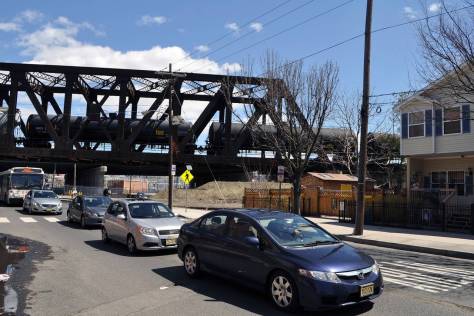Repost from ABC News
[Editor: It’s good to find a compilation of these catastrophic oil train accidents all in one place. See also a listing on SafeBenicia.org, somewhat out of date but with more detail and photos. – RS]
Recent Oil Train Crashes in the US and Canada
By The Associated Press, May 1, 2015, 3:28 PM ETSweeping regulations to boost the safety of trains transporting crude oil, ethanol and other flammable liquids were announced Friday by U.S. and Canadian officials. The long-awaited regulations are a response to a series of oil train accidents in both countries over the last few years that have resulted in spectacular fires that burned for days.
Here are some of those accidents:
— July 5, 2013: A runaway Montreal, Maine & Atlantic Railway train that had been left unattended derailed, spilling oil and catching fire inside the town of Lac-Megantic in Quebec. Forty-seven people were killed and 30 buildings burned in the town’s center. About 1.6 million gallons of oil was spilled. The oil was being transported from the Bakken region of North Dakota, the heart of an oil fracking boom, to a refinery in Canada.
— Nov. 8, 2013: An oil train from North Dakota derailed and exploded near Aliceville, Alabama. There were no deaths but an estimated 749,000 gallons of oil spilled from 26 tanker cars.
— Dec. 30, 2013: A fire engulfed tank cars loaded with oil on a Burlington Northern-Santa Fe train after a collision about a mile from Casselton, North Dakota. No one was injured, but more than 2,000 residents were evacuated as emergency responders struggled with the intense fire.
— Jan. 7, 2014: A 122-car Canadian National Railway train derailed in New Brunswick, Canada. Three cars containing propane and one car transporting crude oil from Western Canada exploded after the derailment, creating intense fires that burned for days. About 150 residents of nearby Plaster Rock were evacuated.
— Jan. 20, 2014: Seven CSX train cars, six of them containing oil from the Bakken region, derailed on a bridge over the Schuylkill River in Philadelphia. The bridge is near the University of Pennsylvania, a highway and three hospitals. No oil was spilled and no one was injured. The train from Chicago was more than 100 cars long.
— April 30, 2014: Fifteen cars of a crude oil train derail in Lynchburg, Virginia, near a railside eatery and a pedestrian waterfront, sending flames and black plumes of smoke into the air. Nearly 30,000 gallons of oil were spilled into the James River.
— Feb. 14, 2015: A 100-car Canadian National Railway train hauling crude oil and petroleum distillates derailed in a remote part of Ontario, Canada. The blaze it ignited burned for days.
— Feb. 16, 2015: A 109-car CSX oil train derailed and caught fire near Mount Carbon, West Virginia, leaking oil into a Kanawha River tributary and burning a house to its foundation. The blaze burned for most of week.
— March 10, 2015: 21 cars of a 105-car Burlington Northern-Santa Fe train hauling oil from the Bakken region of North Dakota derailed about 3 miles outside Galena, Illinois, a town of about 3,000 in the state’s northwest corner.
— March 7, 2015: A 94-car Canadian National Railway crude oil train derailed about 3 miles outside the Northern Ontario town of Gogama. The resulting fire destroyed a bridge. The accident was only 23 miles from the Feb. 14th derailment.





You must be logged in to post a comment.